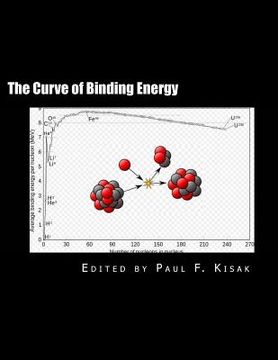Compartir
The Curve of Binding Energy: " The Energy of Fission & Fusion " (en Inglés)
Paul F. Kisak
(Autor)
·
Createspace Independent Publishing Platform
· Tapa Blanda
The Curve of Binding Energy: " The Energy of Fission & Fusion " (en Inglés) - Kisak, Paul F.
28,73 €
30,25 €
Ahorras: 1,51 €
Elige la lista en la que quieres agregar tu producto o crea una nueva lista
✓ Producto agregado correctamente a la lista de deseos.
Ir a Mis Listas
Origen: Estados Unidos
(Costos de importación incluídos en el precio)
Se enviará desde nuestra bodega entre el
Miércoles 17 de Julio y el
Miércoles 31 de Julio.
Lo recibirás en cualquier lugar de España entre 1 y 5 días hábiles luego del envío.
Reseña del libro "The Curve of Binding Energy: " The Energy of Fission & Fusion " (en Inglés)"
Nuclear binding energy is the energy that would be required to disassemble the nucleus of an atom into its component parts. These component parts are neutrons and protons, which are collectively called nucleons. The binding energy of nuclei is due to the attractive forces that hold these nucleons together and this is usually a positive number, since most nuclei would require the expenditure of energy to separate them into individual protons and neutrons. The mass of an atomic nucleus is usually less than the sum of the individual masses of the constituent protons and neutrons (according to Einstein's equation E=mc2) and this 'missing mass' is known as the mass defect, and represents the energy that was released when the nucleus was formed.The term nuclear binding energy may also refer to the energy balance in processes in which the nucleus splits into fragments composed of more than one nucleon. If new binding energy is available when light nuclei fuse, or when heavy nuclei split, either process can result in release of this binding energy. This energy may be made available as nuclear energy and can be used to produce electricity as in (nuclear power) or in a nuclear weapon. When a large nucleus splits into pieces, excess energy is emitted as photons (gamma rays) and as the kinetic energy of a number of different ejected particles (nuclear fission products).The nuclear binding energies and forces are on the order of a million times greater than the electron binding energies of light atoms like hydrogen.The mass defect of a nucleus represents the mass of the energy of binding of the nucleus, and is the difference between the massof a nucleus and the sum of the masses of the nucleons of which it is composed.The editor has degrees in Engineering Physics & Nuclear Engineering from the University of Michigan and is an Engineer & Former Intelligence Officer for the CIA & US Intelligence Community and was President of an award-winning Defense Contracting Company. He has authored several books, edited numerous other books and has written many Technical, Classified & Unclassified papers, Articles & Essays. He has also been a Contributing Author for The International Encyclopedia on Intelligence and Counter-Intelligence and written several award-winning software manuals that have been sold in more than a dozen countries. He has appeared in Marquis "Who's Who in the World" & "Who's Who in Science & Engineering" and continues to edit and write.
- 0% (0)
- 0% (0)
- 0% (0)
- 0% (0)
- 0% (0)
Todos los libros de nuestro catálogo son Originales.
El libro está escrito en Inglés.
La encuadernación de esta edición es Tapa Blanda.
✓ Producto agregado correctamente al carro, Ir a Pagar.

